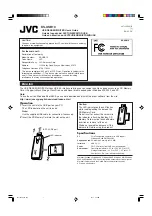
Operating instructions
Chapter
10
ICR 84x Image Code Reader
Appendix
8 010 961/0000/10-05-2005
©
SICK AG · Division Auto Ident · Germany · All rights reserved
10-49
Reading diagnosis data
Data directly derived from the reading procedure by the ICR. This data enables the quality
of the 2-D code read to be assessed. The data is always output on the
Ö
auxiliary interface
together with the reading result. Only output on the host, CAN or Ethernet interface (port
2112) if enabled on the D
ATA
S
TRINGS
tab in the CLV Setup program (disabled by default for
ICR 84x).
Reading interval
Timeslot in which the ICR activates the red illumination field and attempts to detect valid bar
codes from the information read. The reading interval may be shorter than the external
reading pulse, depending on the selected output mode for the reading result.
Reading pulse
Pulse applied externally to the ICR to trigger the internal
Ö
reading interval. Can be supplied
by a photoelectric reflex switch or a command from the host on the serial interface.
Reading result
Electronic representation of the data content of the read codes together with the
Ö
reading
diagnosis data in one
Ö
data output string that is generated after the reading pulse has
elapsed. The reading result on the auxiliary interface has a fixed format (content and output
format); the reading result on the host, CAN or Ethernet interface (port 2112) can be
configured separately for good reads and no reads. Special characters like reading
diagnosis data, control characters and/or alphanumeric constants can also be added if
necessary.
Result status output
Function of the “Result 1“ and “Result 2“ switching outputs and the beeper in Reading
mode. Signals the status of the reading result without indicating its contents (e.g.
“
Good
Read“). You can assign a status to each output/beeper on the D
EVICE
C
ONFIGURATION
tab in
the user interface of CLV Setup. The “Result“ LED is linked to the “Result 2“ output.
Sending point
Point at which the reading result is output with respect to the start of the
Ö
reading pulse
and the internal
Ö
reading interval.
SMART decoder
Specially developed
Ö
decoder for reading bar codes with an extremely small code height
(
Ö
aspect ratio > 1:3) and for poor-quality or contaminated code prints.
Storage in ICR
The application-specific
Ö
parameter set can be stored temporarily or permanently in the
ICR. If it is stored temporarily in the RAM, it is lost as soon as the power supply is switched
off. Parameter sets that are stored permanently are transferred to the EEPROM in the ICR
and remain active as the current data record when the power supply is switched off. The
default setting is not affected by this and is stored in a read-only memory (ROM).
Standard decoder
Tried-and-tested
Ö
decoder from the CLV and ICR product family. Suitable for applications
with an adequate code height, limited tilt, and high-quality code prints.










































